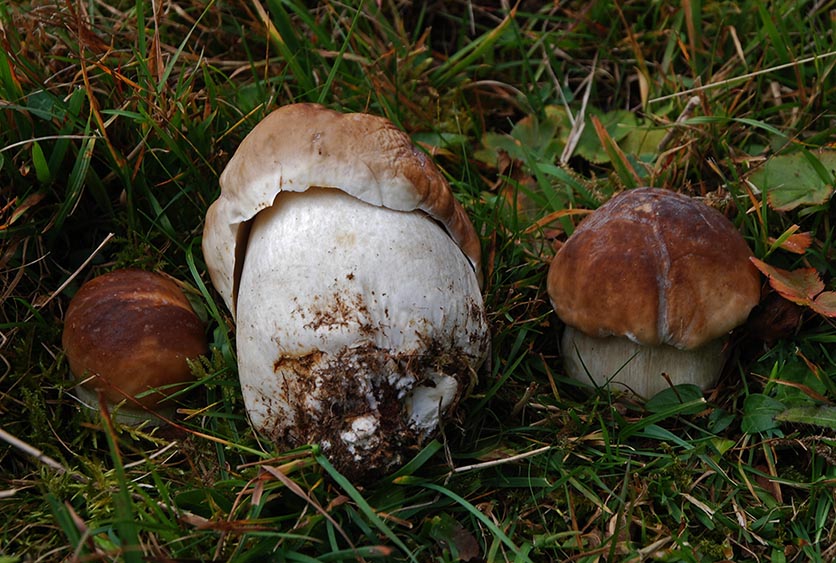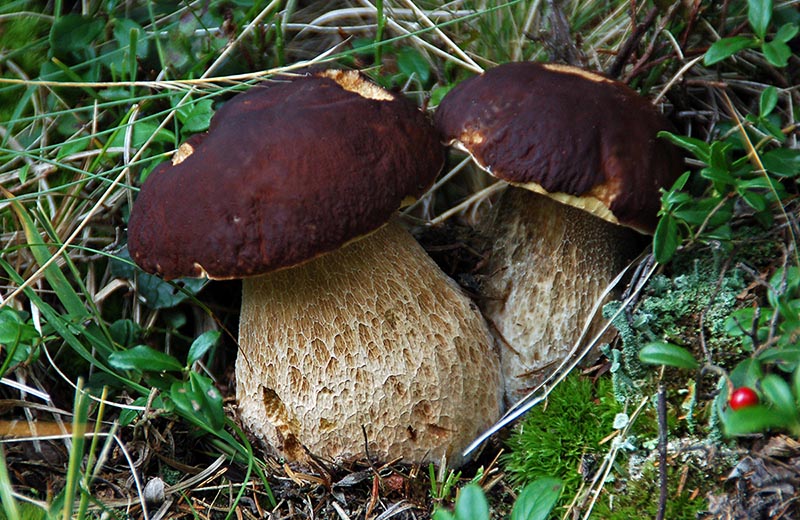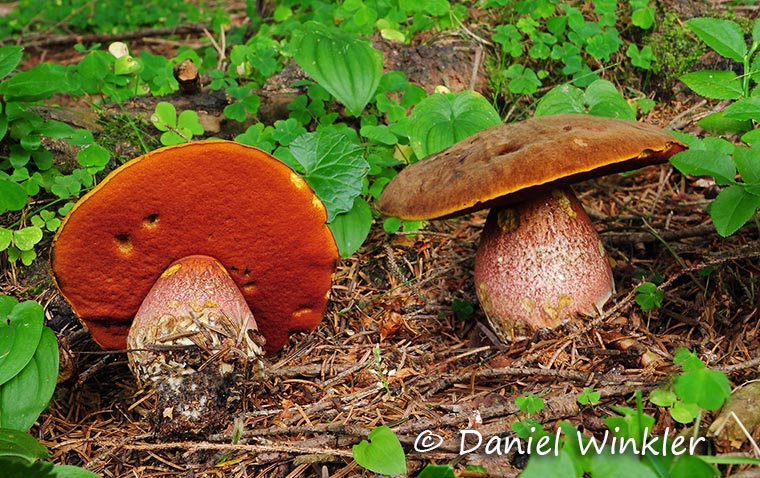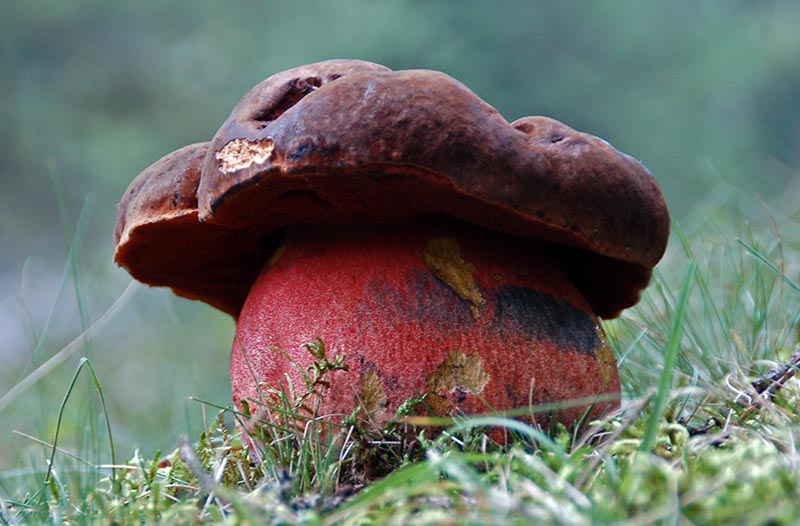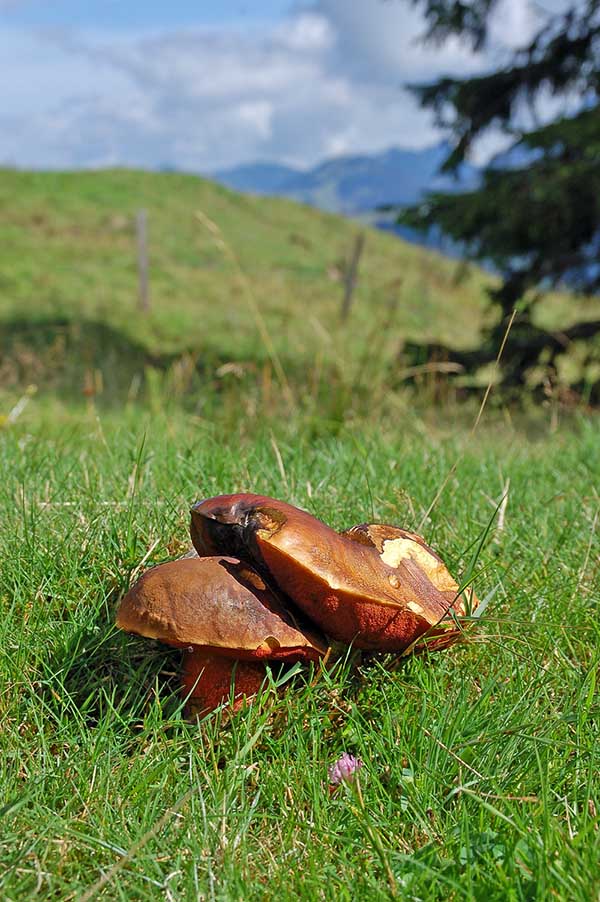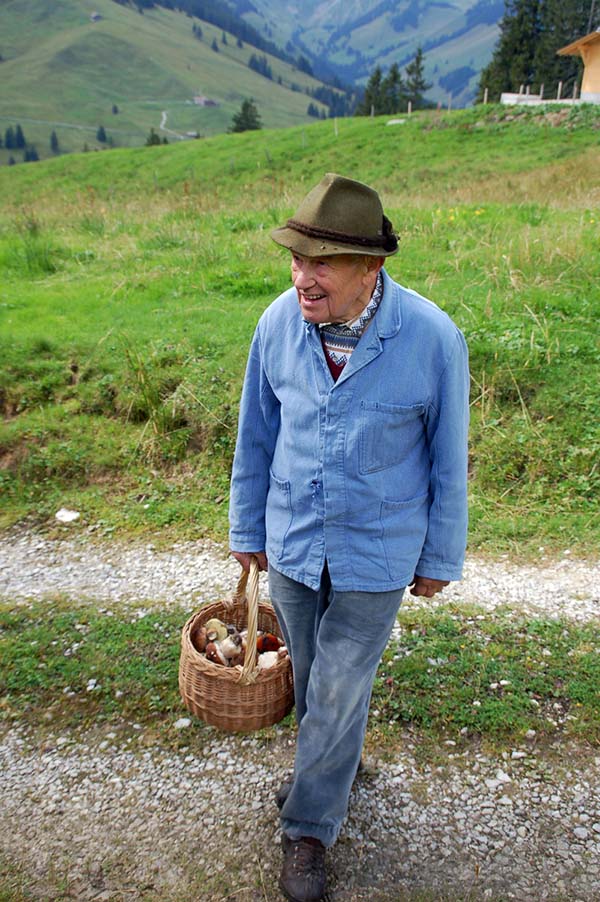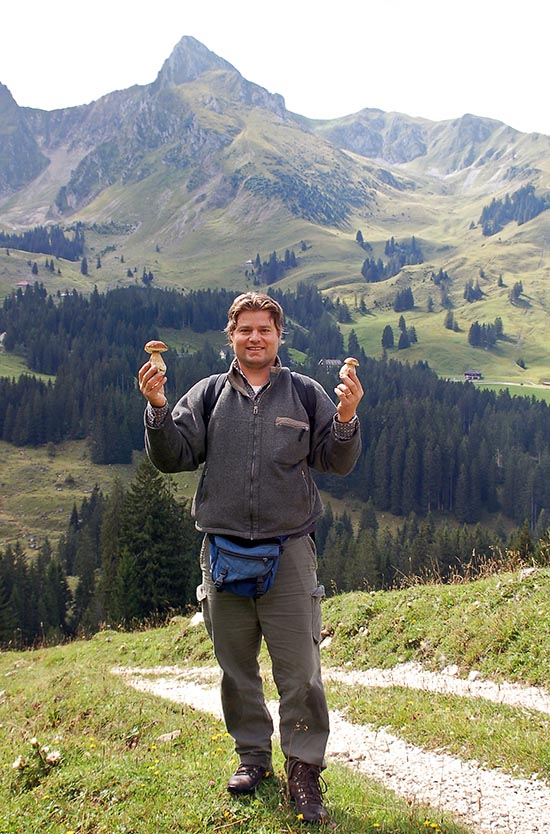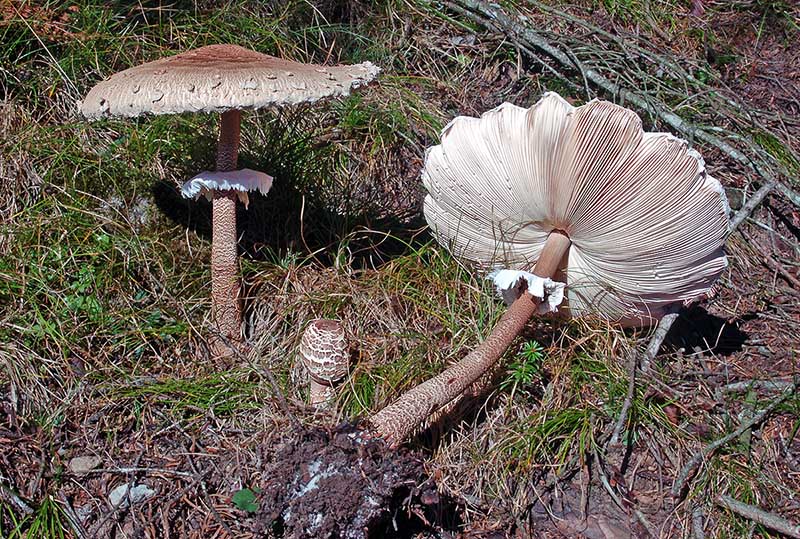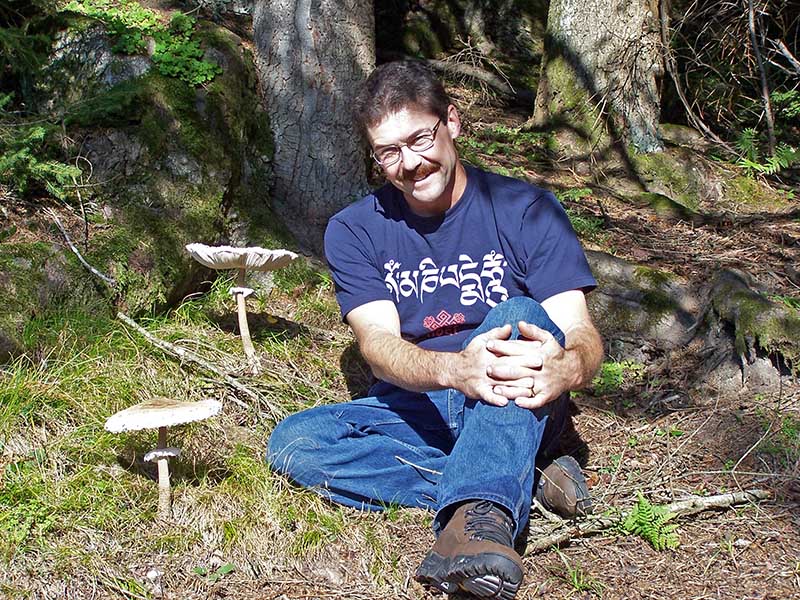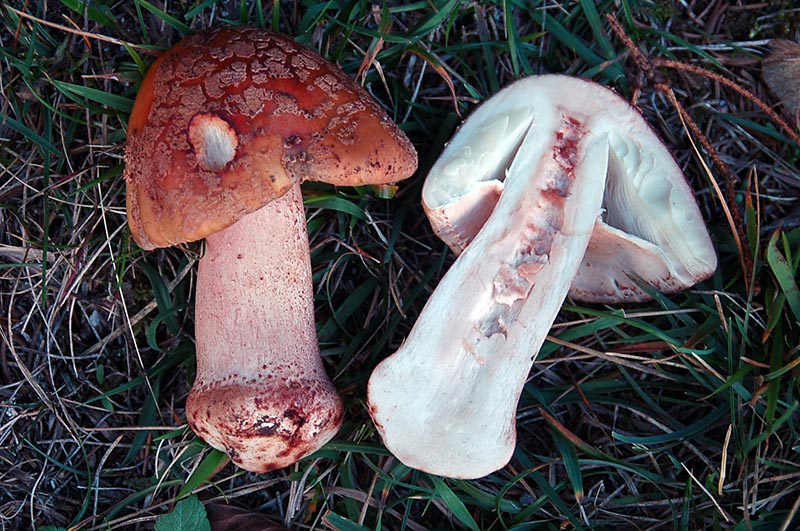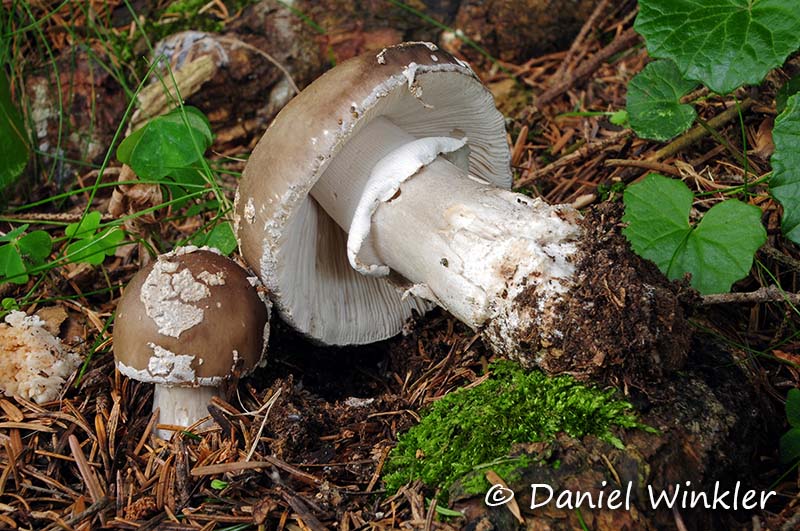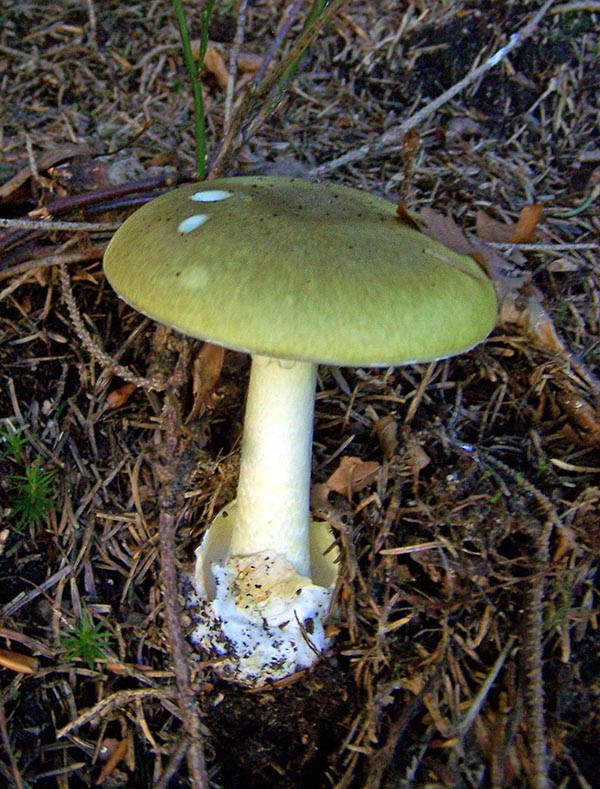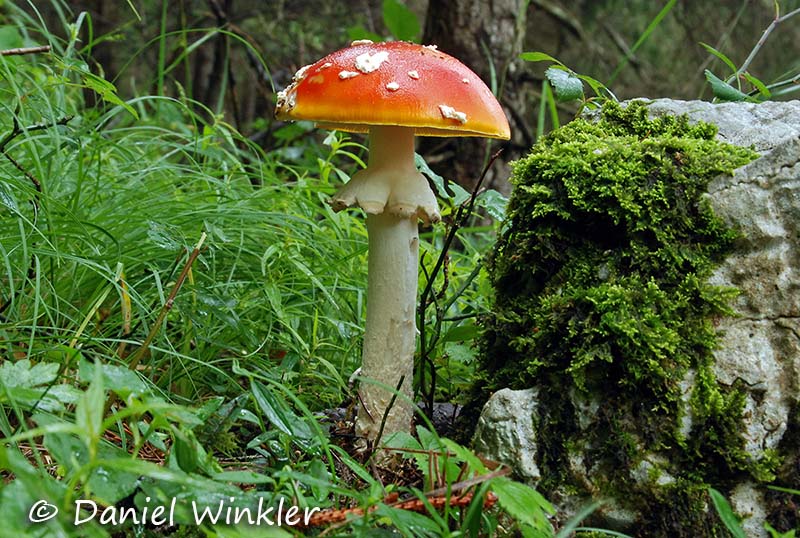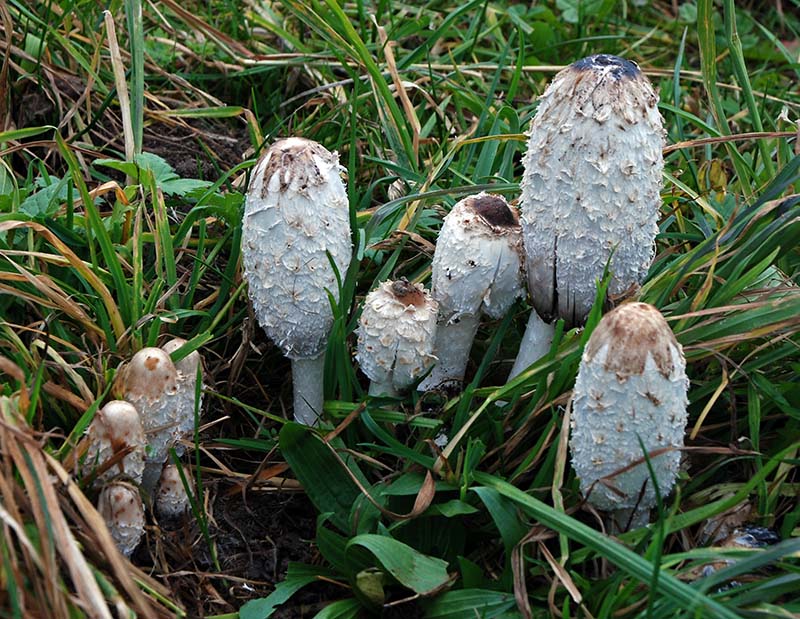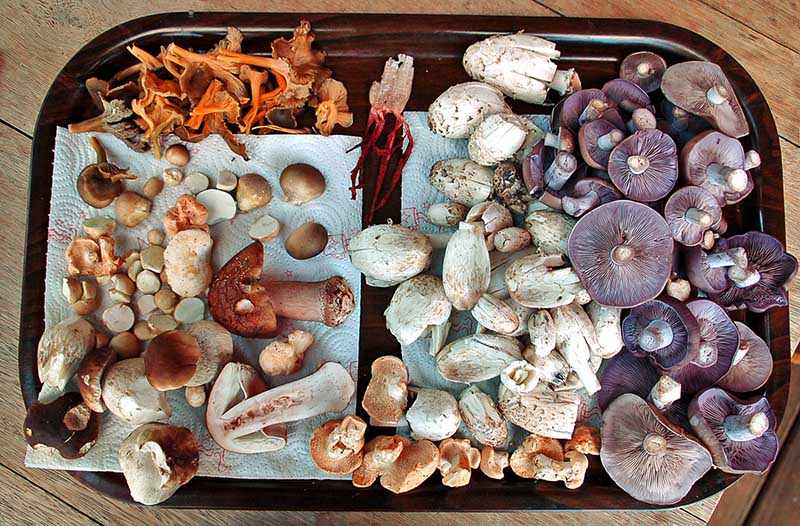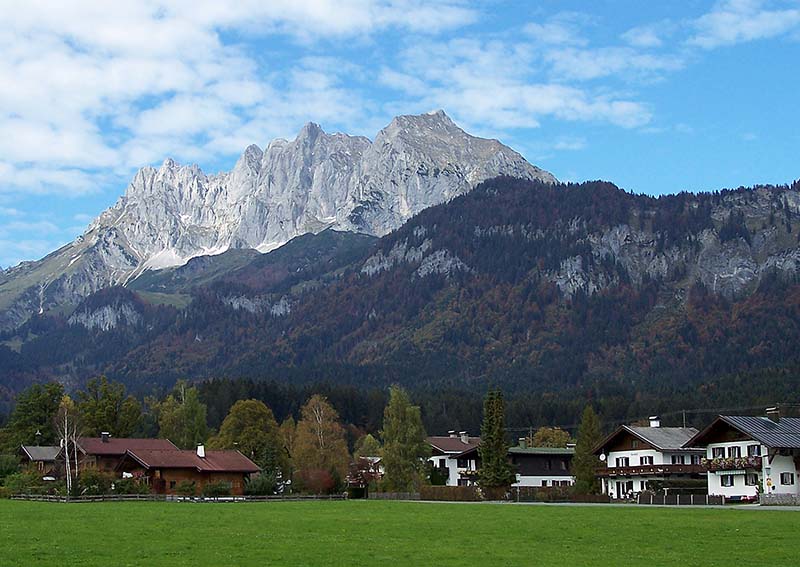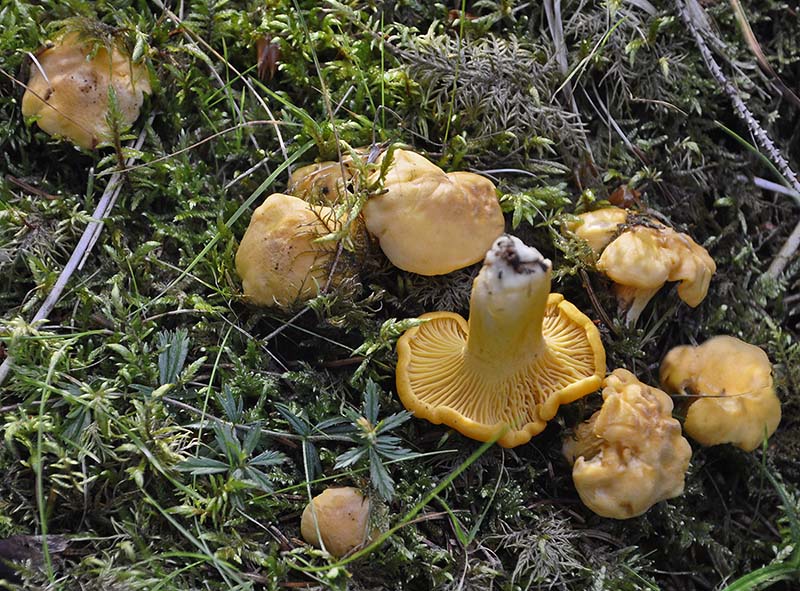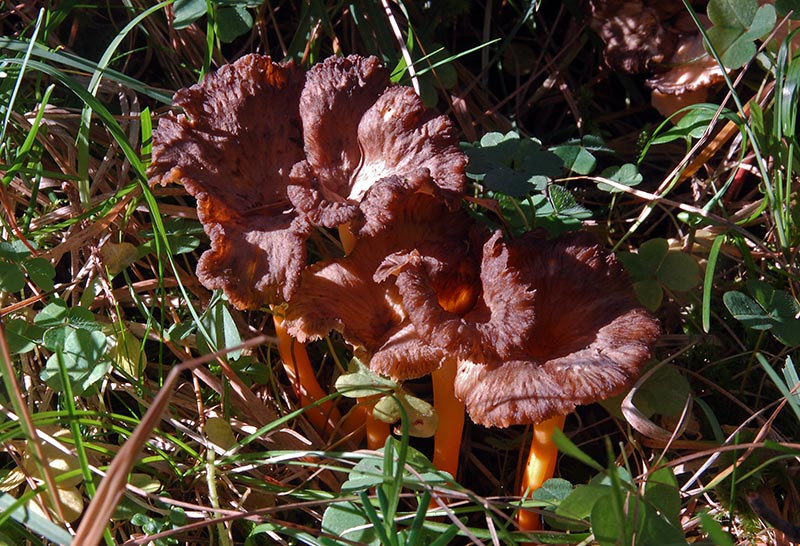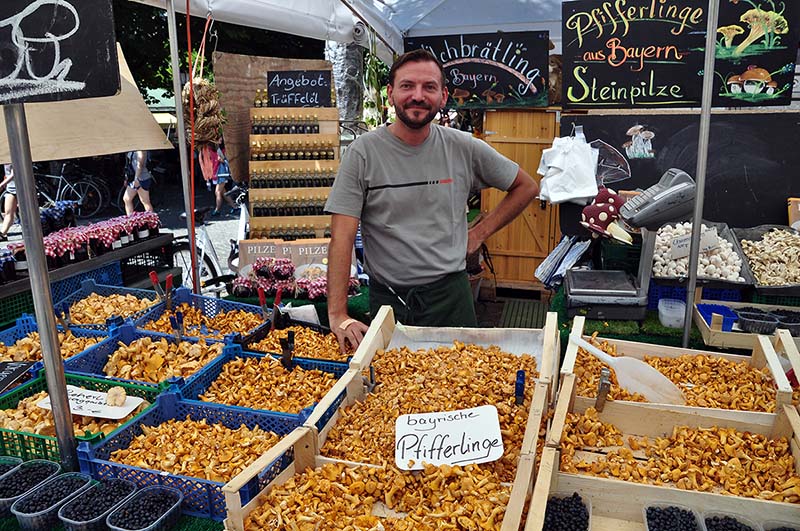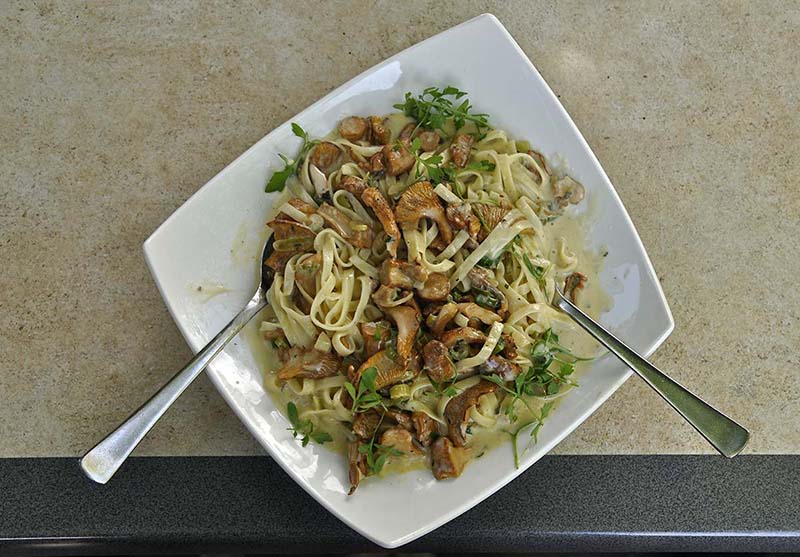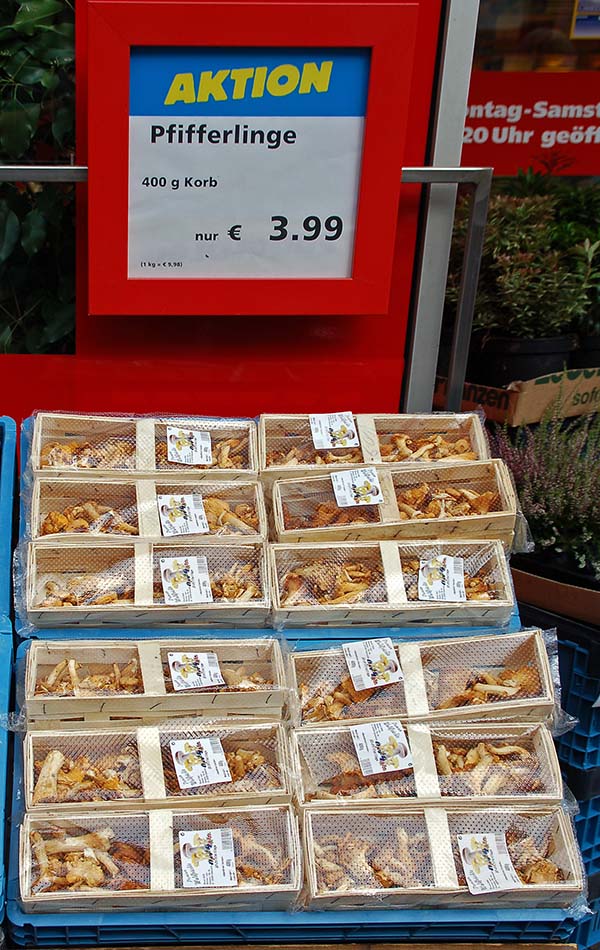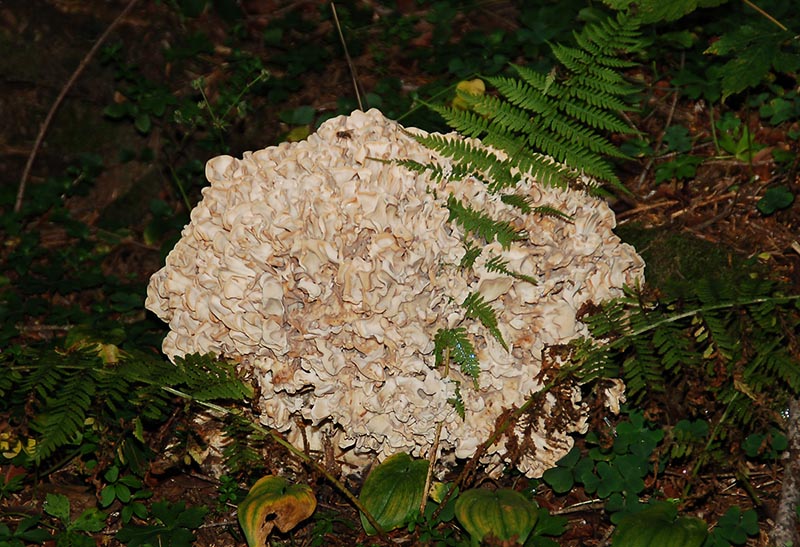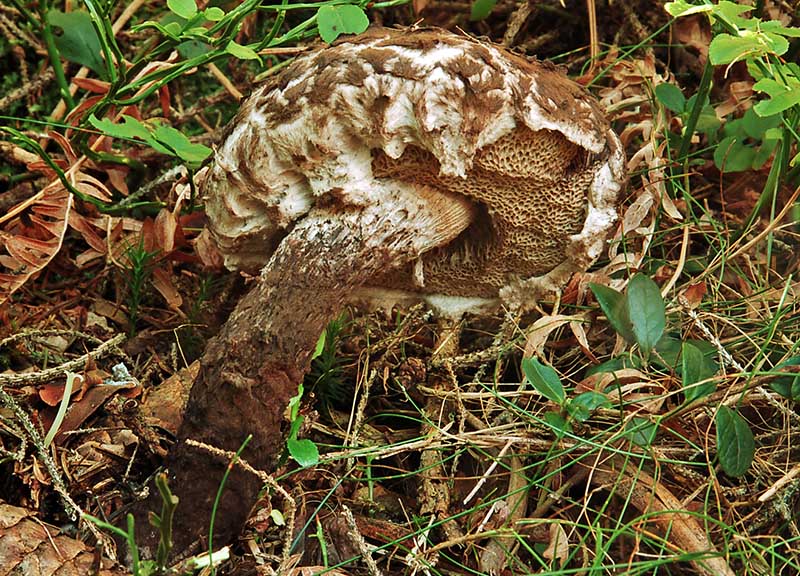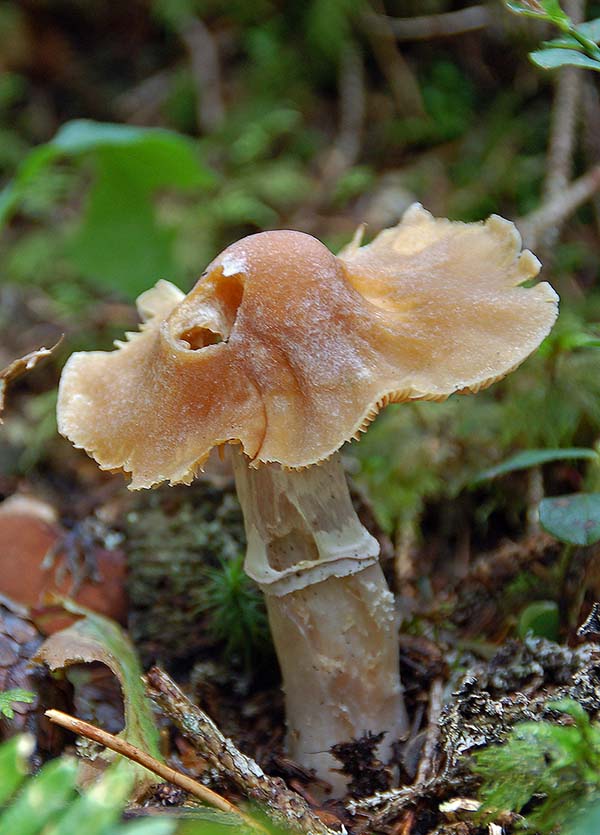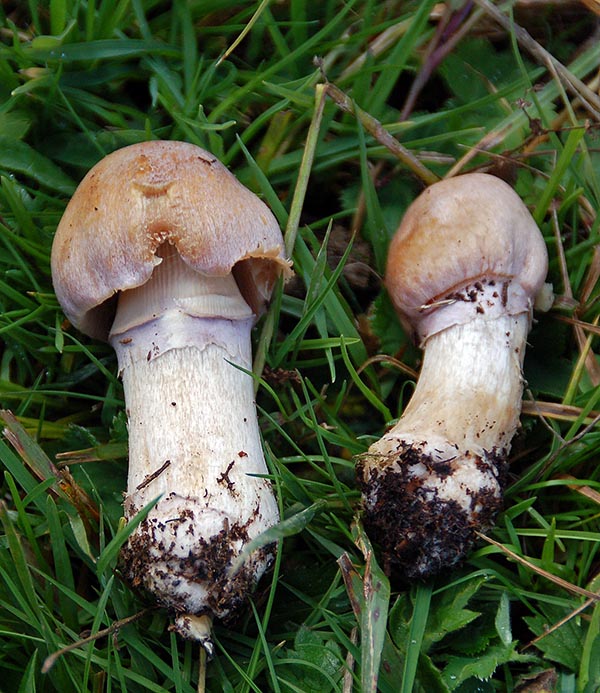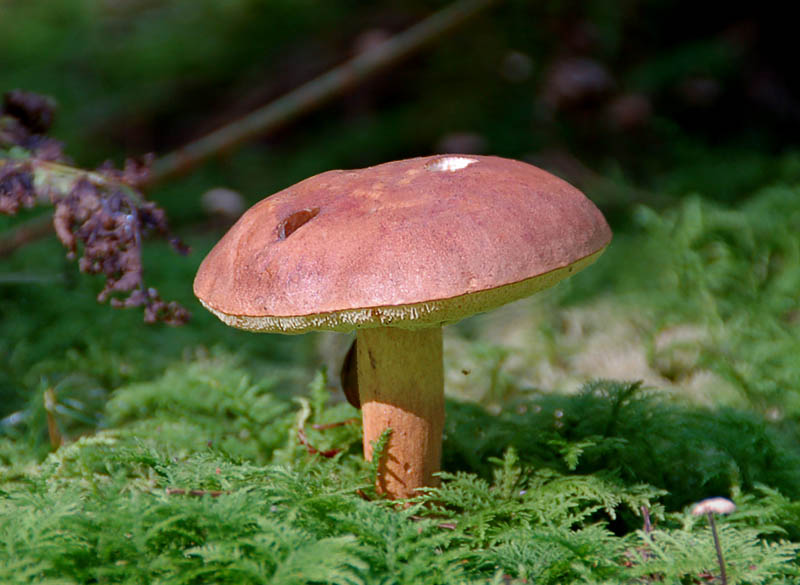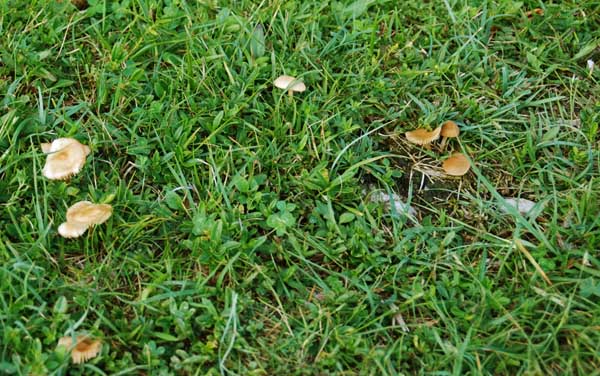|
Edible and Other Notable Mushrooms in the Northern Alps
 The Wild Kaiser (Wilder Kaiser, several peaks above 2300 m / 7600 ft) seen from the town of Going. 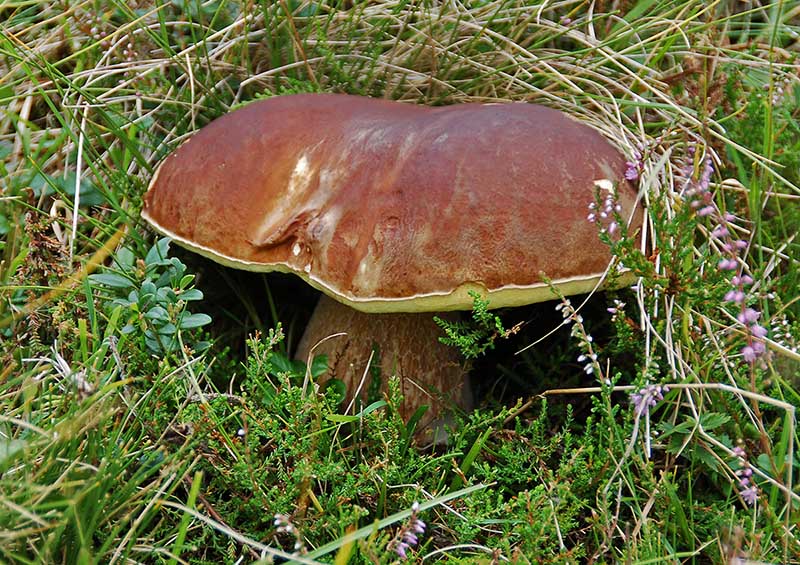 A king bolete, close to Boletus edulis, but it might be Boletus pinophilus, though the name suggests pine-association it can also associated with spruce
Amanita muscaria, Fly Agaric, in German: Fliegenpilz. The fairy book mushroom. Often falsly accused to be deadly, though it is for sure toxic, unless one is eager to have an out-of-body experience and is willing to feel so sick to the point where the mind says to the body "see you later" and prefers to be not in contacxt with vile feeling of total nausea. These side effects are the reason why there is not a lot of people that indulge. However, with proper preperation it can be turned into a good edible mushroom. Key is the neutralization of ibotenic acid, a neuro toxin. Thia can be done by slicing the mushroom and parboiling in lots of water. Actually Fly agarics where eaten by the ton in Germany during starvation period after WW2. However, nowadays it is not eaten by many people anymore.
Link to Mushroaming the Tyrolean Alps July 25 to Augus 4, 2015 trip
Link to Mushroaming the Tyrolean Alps July 25 to Augus 4, 2015 trip Page first published 11-11-2014
|
|
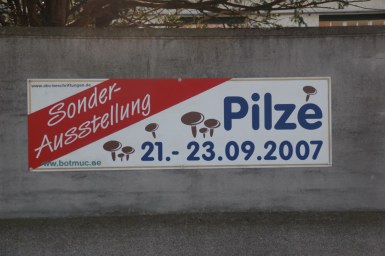 Munich's mycological societies annual mushroom show is hosted at the Nymphenburg Botanical Garden. It usually is held on the third weekend of September, which also is the opening weekend of the Oktoberfest. What a nice coincide!
|
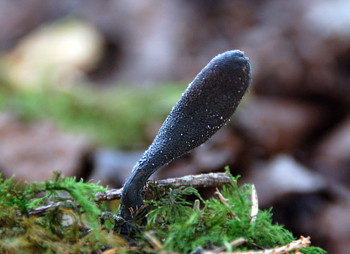 |
|
Lepista nuda / Clitocybe nuda - The Blewit
|
|
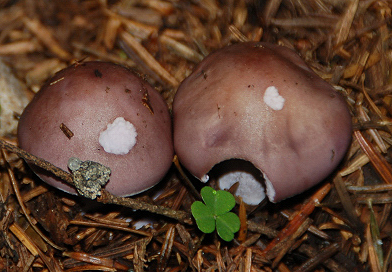 St Johann in Tyrol, Austria, September 2006
|
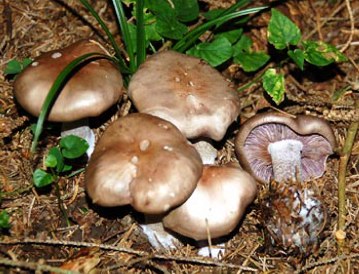 St Johann in Tirol, Austria, September 2007
|
|
|
|
- MushRoaming
- MushRoaming Home
- Amazing Amazon
- Pacific Northwest
- Truffles in the PNW
- Cordyceps Tour 2010
- Cordyceps & Morel Tour 2008
- Tibet Fungal Floral Foray 2010
- Tibet's Mushrooms
- Mushroaming in the Alps
- Mushroom markets (Munich etc.)
- Fire Morels 2013
- Colorado Mushrooms
- Hawaii Mushrooms
- Bhutan's Mushrooms
- Pilzreisen (in German)
- MushRoaming Tours
- Cordyceps
- Presentations & Events
- Goods & Resources
- Photo Gallery
- Tibet Photo Essays
- Colombia 2023
- Bhutan 2019
- Colombia 2020
- Home page Gallery
- Suriname Tepu 2019
- Suriname 2018
- Colombia 2019
- Bhutan 2018
- Colombia 2017
- Colombia 2016
- Colombia 2015
- Colombia 2014
- Morel-Cordyceps-East-Tibet-2015
- Tibet Kham Summer 2012
- Bolivia 2014
- Bolivian Amazon 2013
- Bolivia Rain Forest 2012
- Mushroaming Kerala
- Alaska Mushrooming
- Contact us
